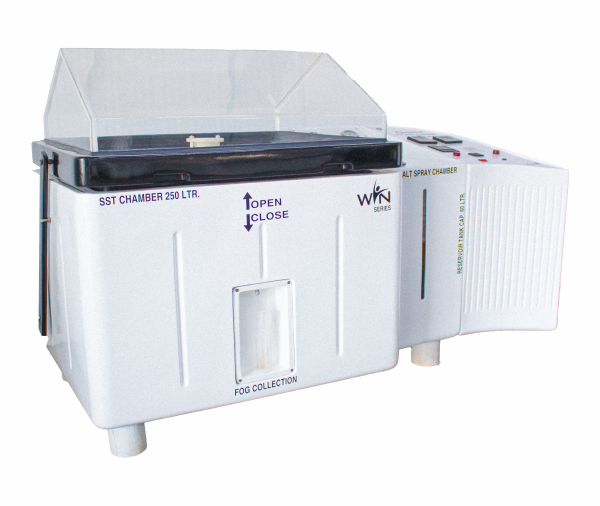A salt spray corrosion test chamber, also known as a salt fog chamber or salt spray chamber, is a specialised testing apparatus designed to simulate and accelerate the corrosive effects of salt-laden environments on materials and coatings. This type of testing is particularly relevant for industries such as automotive, aerospace, marine, and coatings, where exposure to salt air or sea spray can lead to corrosion and degradation of materials.
Here's how a salt spray corrosion test chamber typically works:
- Test Specimens Preparation: Before the test, samples of the materials or coatings to be tested are prepared and mounted in the chamber. These specimens can include metal parts, painted surfaces, or any material that needs to be evaluated for its resistance to corrosion.
- Salt Solution Preparation: A saline solution, typically composed of sodium chloride (NaCl), is mixed in a specific concentration with water. This solution is then atomized or sprayed into the test chamber to create a controlled salt-laden environment.
- Testing Conditions: The specimens are exposed to the salt spray corrosion test chamber under controlled conditions, including temperature and humidity. The duration of the test can vary, depending on the testing standards and the specific requirements of the materials being evaluated.
- Observation and Evaluation: During and after the test, the specimens are periodically inspected for signs of corrosion, such as rust, discoloration, or other forms of deterioration. The severity and type of corrosion observed can provide valuable information about the material's resistance to salt-induced corrosion.
- Testing Standards: Salt spray corrosion testing is often conducted following international standards such as ASTM B117, ISO 9227, or other industry-specific standards. Adhering to these standards ensures consistency and comparability of test results across different laboratories and industries.
The salt spray corrosion test chamber is a crucial tool in assessing the durability and performance of materials in harsh environmental conditions. It helps manufacturers and researchers make informed decisions about material selection, coatings, and corrosion protection strategies.





Comments